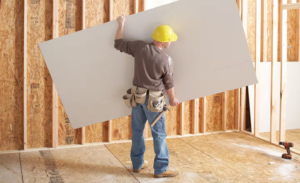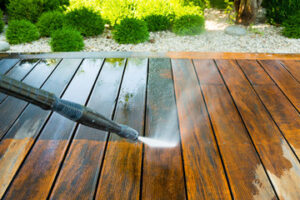Trees add beauty and value to your home’s property. However, they require regular professional care to stay healthy, strong, and storm-resistant.
Emergency Tree Service includes assessing a situation, prioritizing safety, and addressing immediate hazards. It also often provides follow-up services to prevent future damage.

However, the cost of this work can vary widely, depending on various factors. Understanding what drives these costs can help you prepare.
Aesthetics
Whether embracing the art of topiary or cultivating a natural form, aesthetic tree trimming elevates landscapes and enhances personal well-being. It draws attention to striking features such as textured bark or vibrant foliage while highlighting a structure’s symmetry and balance.
Different species of trees have distinct growth patterns, and pruning should complement rather than clash with those characteristics. When trimmed properly, trees display a graceful, sculptural shape that blends with their surroundings. Using strategic trimming to draw the eye to a garden’s architectural features or water elements establishes visual focal points and creates a cohesive visual narrative.
The practice of shaping trees dates back thousands of years. In ancient Egypt and Rome, topiary was used to craft geometric and ornamental forms that symbolized man’s control over nature. Later, niwaki and bonsai techniques were used in Japan to sculpt slender, graceful forms that highlighted the beauty of the tree while providing vitality to the garden. Today, formal topiary continues to be used in modern gardens and public spaces, while a variety of other decorative forms can be cultivated through regular tree pruning.
In addition to establishing balance, aesthetically pleasing pruning should be done at the right time of year. Trimming during the dormant season promotes better healing and reduces the risk of disease transmission. Moreover, pruning at the proper time of year allows the tree to develop a strong foundation for its new growth.
Aesthetically, there are three primary methods of pruning: cleaning, thinning, and raising. Cleaning involves removing dead or diseased branches to maintain health, while thinning removes excess branches for improved density and light penetration. Raising involves removing low-hanging branches that can interfere with pedestrians or vehicles. These pruning practices ensure that trees remain safe and accessible throughout the year.
Ornamental tree trimming also promotes a more tranquil environment by reducing the noise of wind and rain against the foliage, fostering a sense of peaceful repose. This enhanced ambiance inspires leisure activities such as picnicking under the shade of a trimmed tree or yoga sessions surrounded by rustling leaves and fragrant blooms. Ultimately, the aesthetic harmony produced through aesthetic tree trimming increases landscape value while elevating personal well-being and promoting societal well-being.
Evacuate
A fallen tree can damage vehicles, structures, and other property. It can also cause power outages, road blockages, and other community disruptions. In extreme cases, falling trees can even lead to personal injury. For this reason, homeowners need to understand how to recognize and respond to a tree-related emergency. Emergency tree services can help enhance disaster preparedness by providing professional guidance on tree care and emergency response during storms and other emergencies.
Generally, a tree is considered an emergency when it poses a clear threat to property or individuals. This risk may be due to severe weather conditions, visible signs of damage or disease, or root disturbances. In addition to assessing the threat, emergency tree services typically include a thorough removal process that reduces the risk of further damage.
The key to recognizing a potential emergency is understanding how to spot the symptoms and warning signs. The following are some of the most common indications that a tree needs attention:
Excessive Foliage Loss
Unusual leaf loss can indicate severe stress or damage to the tree. It can also be a sign of an insect infestation or nutrient deficiency. If you notice that a tree is losing its leaves or appears to be discolored, contact an arborist right away.
Leaning Trees
A dangerously leaning tree is a major safety concern and requires immediate action. If left unattended, a leaning tree can fall and destroy property or injure people. Emergency tree services can remove the unsafe tree and protect occupants of nearby buildings.
Root Infringement
Tree roots can encroach on buildings or public spaces, causing extensive damage and creating a hazard to pedestrians. In most cases, it’s impossible to save a tree with infringing roots, but an arborist can assess the situation and determine whether it’s safe to trim the roots or if the best option is to have them removed.
It’s vital for homeowners to work with a local arborist during storm season and throughout the year. Having an emergency tree service plan can prevent unnecessary damage and reduce the cost of disaster cleanup.
Call the Power Company
Trees are a beautiful addition to your yard but they can also be dangerous. They can fall and injure family members or cause property damage. When a tree is unhealthy or leaning and poses a threat, you should call a professional arborist for help. These professionals have the equipment, skills, and expertise to assess the situation and provide expert tree care solutions.
Storms often bring high winds that can damage or even down trees. When a tree falls on a power line, it poses an immediate electrical hazard and can injure or kill anyone who comes into contact with it. Before you attempt to clear debris or tangled branches from around the area, it is important to call your electric utility company and follow their instructions for staying safe until help arrives.
You should also contact your local power company if you notice a downed tree near your house or other structures on your property. They will come out to safely remove the tree and restore power to your home.
It is also important to inspect your property regularly to see if any trees are growing too close to or encroaching on power lines. These lines should be trimmed by a professional to reduce the risk of them falling during a storm. Additionally, if you plan on planting new trees in your yard, always call 811 to have underground utility lines marked before digging.
Another reason to seek emergency tree service is if the tree obstructs critical views or creates a safety hazard. For instance, a large tree that overhangs a sidewalk can block pedestrians’ view of oncoming traffic or cause them to trip and hurt themselves. Skilled tree removal services can take care of such situations and even work with your insurance company on your behalf.
As a homeowner, you should never try to tackle tree-related emergencies on your own. In most cases, it’s safer and more convenient to rely on experienced professional tree services to help with your emergency.
Contact Your Insurance Company
Trees that fall or are threatening to fall are considered emergencies and should be dealt with as soon as possible. Whether the tree has fallen due to old age or severe weather, it needs to be removed immediately to prevent damage to other properties or people. It’s important to contact a reputable emergency tree service as quickly as possible so they can assess the situation and begin working on it right away.
Insurance companies typically cover the cost of emergency tree services, especially in cases where a tree has fallen and caused property damage. In some cases, they may even cover additional expenses related to the cleanup process like stump grinding and debris removal. However, the exact coverage will vary from policy to policy, so it’s important to check with your insurer for details.
The best way to find a reliable emergency tree service is to ask for recommendations from friends and family members who have used them before. You can also search online for a company that offers emergency tree services in your area. Once you’ve found a few potential options, read online reviews and customer feedback to help narrow down your choices. Lastly, compare prices to find the best deal.
It’s also important to keep in mind that emergency tree services are often more expensive than normal tree maintenance. This is because the work must be done at a moment’s notice and in a hazardous environment. As a result, these companies must pay hazard pay to their employees and invest in specialized equipment for the job.
Another reason why emergency tree services are so much more expensive is that they must work around the clock to respond to calls. During storms, the phone lines are often inundated with calls from homeowners asking for assistance with downed trees. In addition, these professionals often have to travel long distances to get to the scene of a disaster, so they must charge accordingly to offset the time and gas costs.
Fortunately, there are some companies that specialize in working with insurance companies and understand the ins and outs of the process. They can help you file your claim, submit documentation and more. In addition, these companies can provide you with an accurate estimate and ensure that the work is performed properly.








